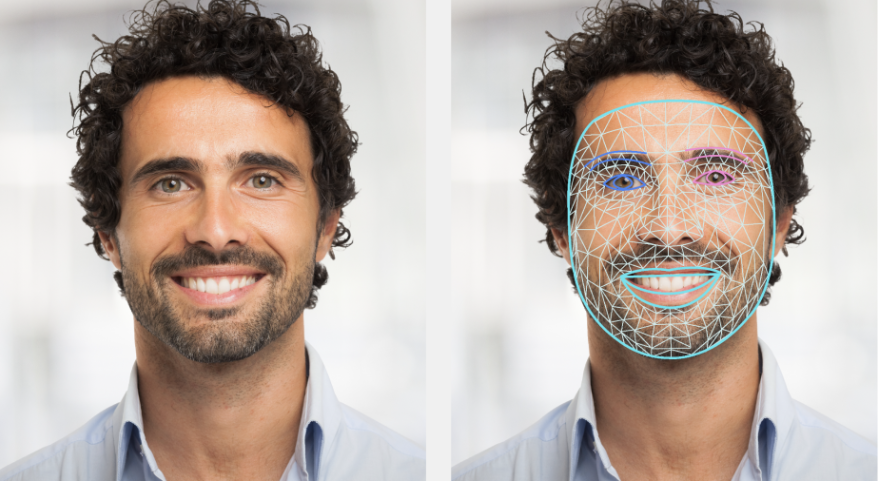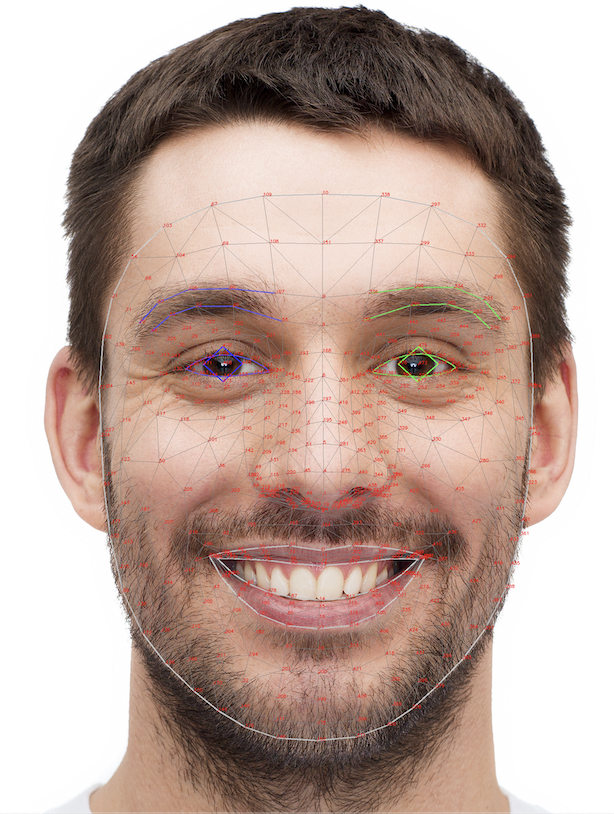
The MediaPipe Face Landmarker task lets you detect face landmarks and facial expressions in images and videos. You can use this task to identify human facial expressions, apply facial filters and effects, and create virtual avatars. This task uses machine learning (ML) models that can work with single images or a continuous stream of images. The task outputs 3-dimensional face landmarks, blendshape scores (coefficients representing facial expression) to infer detailed facial surfaces in real-time, and transformation matrices to perform the transformations required for effects rendering.
Get Started
Start using this task by following one of the implementation guides for your target platform. These platform-specific guides walk you through a basic implementation of this task, including a recommended model, and code example with recommended configuration options:
- Android - Code example - Guide
- Python - Code example - Guide
- Web - Code example - Guide
Task details
This section describes the capabilities, inputs, outputs, and configuration options of this task.
Features
- Input image processing - Processing includes image rotation, resizing, normalization, and color space conversion.
- Score threshold - Filter results based on prediction scores.
| Task inputs | Task outputs |
|---|---|
The Face Landmarker accepts an input of one of the following data types:
|
The Face Landmarker outputs the following results:
|
Configurations options
This task has the following configuration options:
| Option Name | Description | Value Range | Default Value |
|---|---|---|---|
running_mode |
Sets the running mode for the task. There are three
modes: IMAGE: The mode for single image inputs. VIDEO: The mode for decoded frames of a video. LIVE_STREAM: The mode for a livestream of input data, such as from a camera. In this mode, resultListener must be called to set up a listener to receive results asynchronously. |
{IMAGE, VIDEO, LIVE_STREAM} |
IMAGE |
num_faces |
The maximum number of faces that can be detected by the
the FaceLandmarker. Smoothing is only applied when
num_faces is set to 1.
|
Integer > 0 |
1 |
min_face_detection_confidence |
The minimum confidence score for the face detection to be considered successful. | Float [0.0,1.0] |
0.5 |
min_face_presence_confidence |
The minimum confidence score of face presence score in the face landmark detection. | Float [0.0,1.0] |
0.5 |
min_tracking_confidence |
The minimum confidence score for the face tracking to be considered successful. | Float [0.0,1.0] |
0.5 |
output_face_blendshapes |
Whether Face Landmarker outputs face blendshapes. Face blendshapes are used for rendering the 3D face model. | Boolean |
False |
output_facial_transformation_matrixes |
Whether FaceLandmarker outputs the facial transformation matrix. FaceLandmarker uses the matrix to transform the face landmarks from a canonical face model to the detected face, so users can apply effects on the detected landmarks. | Boolean |
False |
result_callback |
Sets the result listener to receive the landmarker results
asynchronously when FaceLandmarker is in the live stream mode.
Can only be used when running mode is set to LIVE_STREAM |
ResultListener |
N/A |
Models
The Face Landmarker uses a series of models to predict face landmarks. The first model detects faces, a second model locates landmarks on the detected faces, and a third model uses those landmarks to identify facial features and expressions.
The following models are packaged together into a downloadable model bundle:
- Face detection model: detects the presence of faces with a few key facial landmarks.
- Face mesh model: adds a complete mapping of the face. The model outputs an estimate of 478 3-dimensional face landmarks.
- Blendshape prediction model: receives output from the face mesh model predicts 52 blendshape scores, which are coefficients representing facial different expressions.
The face detection model is the BlazeFace short-range model, a lightweight and accurate face detector optimized for mobile GPU inference. For more information, see the Face Detector task.
The image below shows a complete mapping of facial landmarks from the model bundle output.

For a more detailed view of the face landmarks, see the full-size image.
| Model bundle | Input shape | Data type | Model Cards | Versions |
|---|---|---|---|---|
| FaceLandmarker | FaceDetector: 192 x 192 FaceMesh-V2: 256 x 256 Blendshape: 1 x 146 x 2 |
float 16 |
FaceDetector FaceMesh-V2 Blendshape |
Latest |
